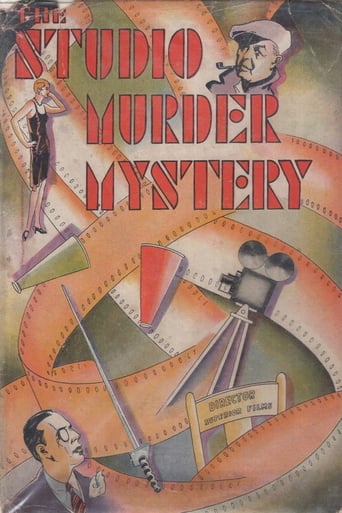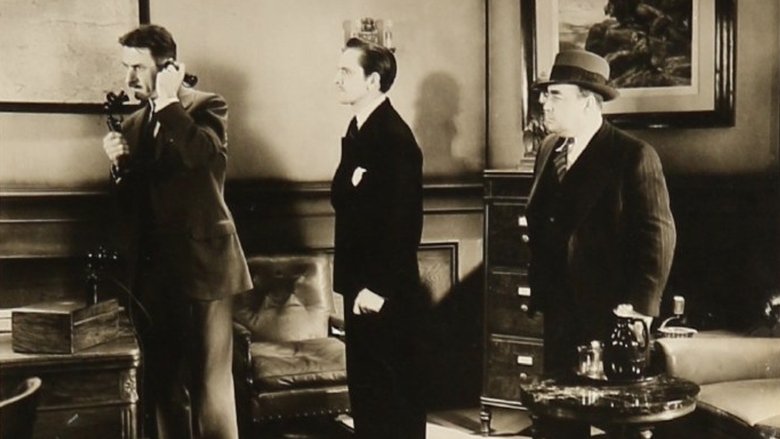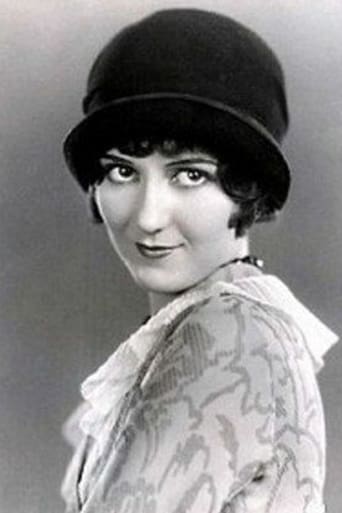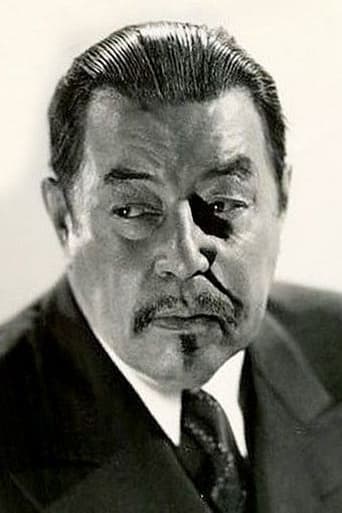

The Studio Murder Mystery (1929)
Philandering actor Richard Hardell is murdered at a movie studio. His jealous wife Blanche, his director Rupert Borka, and a girl he mistreated, Helen MacDonald, all have substantial reasons for having wanted him dead.
Watch Trailer
Cast


Reviews
"The Studio Murder Mystery" from Paramount Pictures in 1929 stars Warner Oland, Frederic March, Neil Hamilton, Eugene Palette, and Doris Hill.Actor Richard Hardell (March) has several enemies. One is his director (Warner Oland), another is his girlfriend (Hill) who finds out he's not going to divorce his wife (Florence Eldridge) and Hardell's wife herself.When Helen is accused of the murder, gag writer Tony White (Hamilton) is determined to solve the case. Many people don't realize that "sound" was different in each studio, as Warners had the license for the Vitaphone. Whatever Paramount owned was nowhere near as good, as the sound here is mushy, and when people speak too quickly, you lose what they are saying.This film differs from the era's talkies in that it moves at a good pace. With people not in the rhythm of sound yet, there are often big pauses between sentences, but not here. And people were still learning how to act in front of a camera. Many actors came from the stage, where performances are much bigger.One reviewer here didn't like Neil Hamilton, but I did. He's handsome and enthusiastic and if he seems maybe TOO enthusiastic, I think it was more the style of the era. Hamilton, who died at 85, played Commissioner Gordon on Batman. Interesting to see some of these people so young!You can get a look at Paramount sound stages on this film, too, which is fascinating, and there is a silent film being shot during one of the scenes.Good artifact.
I happen to see this film on YouTube in 11 segments which made watching it easier. It is in bad need of restoration and the fact that it is Fredric March's third film might get it restored.It's an early talkie and it is complete with all the problems that those films had. March who was one of many stage trained players with good speaking voices who came to Hollywood with the popularity of talking pictures. March seemed to know what to do and the film's other players also were not playing for the galleries like they would on stage. The problem with the film is that it has too much talk. It's as if Paramount said, we know have sound, let there be dialog. And there is dialog with no trace of subtlety at all.March who is fourth billed in the cast plays a no good womanizing actor who regularly two times his wife and in this case his real life spouse Florence Eldridge makes her first joint appearance on film with her husband. She's one of many suspects that include Doris Hill a young starlet he's been stringing along, her brother Gardner James, her father Guy Oliver, and a director Warner Oland whose wife March had also been playing around with. Not until he played Marcus Hubbard in Another Part Of The Forest would March play this slimy a character on screen.Also on the suspect list is Neil Hamilton who's a gag writer at the studio and has as fresh a mouth you would hear this side of James Cagney. He and investigating detective Eugene Palette who has a most stupid looking mustache are oil and water from the beginning. Hamilton keeps throwing zingers at Palette and he earns his way on the suspect list for that alone. If I had some good ideas about solving the murder I wouldn't antagonize the investigating detective. Truth be told Palette is no dumber than he is playing Sergeant Heath in the Philo Vance films and William Powell worked well with him.But as luck would have it Hamilton solves the crime by coming up with some background information on one of the suspects. In that he frees another who was tried and convicted.There is a nice look at Paramount studios at the beginning of the sound era in The Studio Murder Mystery. In a few years once the technical and script problems for sound were licked this might have been a better picture.
However, I'd say this will probably be of interest to you only if you are into the early talkies or film history. I viewed a very good print of this film, so there are some out there.Richard Hardell (Fredric March) is a man who won a contest and opportunity to star in films, but he seems to be taking that opportunity to make enemies at every turn. His director (Warner Oland) suspects him of having an affair with his wife, Hardell's wife knows he's been unfaithful in the past and is suspicious that old habits die hard, and Hardell is actually having an affair with a young ingénue, Helen MacDonald, who finds out she's just one in a string of many girls on the side after Hardell has sworn his undying love. Finally, there is Helen's brother who knows about Hardell's wicked ways and how he is using his sister.Hardell is found dead on the set, a knife sticking out of his chest, and the question is, of course, who among the many who had motives and opportunity actually did it. Others have called this slowly paced, but I thought it moved along briskly with good performances by all. You can figure the mystery out yourself if you pay close attention to what is going on and differentiate what you know you saw versus what most people could assume they saw leading up to the murder.The best part of this film is getting a good look at the Paramount sound stages as there are some scenes in the film that actually show an early sound film shooting in progress. One key scene is definitely a shot of a silent film in progress, another has a sound film being shot complete with the old camera booths from the early sound era. The film itself has one foot in talkies and the other in silents as the scenes in which there is conversation are completely static - courtesy of sound technology of the time. You can also clearly see that the scenes in which the camera shows any movement are silent with some sound dubbed over them. This was a common technique in 1928 and 1929 as there was no other way to include action scenes in the Vitaphone era.I'd say the one distraction in this film is Neil Hamilton, who plays struggling studio gag writer Tony White who loves tragic figure Helen MacDonald from afar. I thought he was quite good when he played more serious dramatic roles, but here he's given the smirking wise cracking style of Lee Tracy and it just doesn't suit him.
This is a very interesting look at the Paramount lot in 1929.In the film within a film inside the studio the "film" being made is clearly a silent.The camearmen are cranking their cameras by hand and there is a small orchestra to give mood music to the actors.However on the back lot they are making a sound film as is apparent from the man at a control board.Much of the early action takes place by the famous main gate.Beyond this the copy that i have is from a rather battered print,so it is hard at times to make out what the actors are saying.It is a typical whodunit from the early talkie days with a very young Frederick March.Worth viewing for its historic interest.




